Loading
Journal of Clinical Haematology
ISSN: 2766-4686
Most Read Articles
Lower 24-Month Relative Survival among Black Patients with Non- Hodgkin’s Lymphoma: An Analysis of the SEER Data 1997-2015
Maria Jacqueline Nieto , Zhen Li , Hasan Rehman , Muhammad Wasif Saif
Recent progress in the therapies used for patients with Non- Hodgkin’s lymphoma (NHL) has improved survival. In 2020, 77,240 people were diagnosed with NHL. Although it accounts for 4% of all cancers, the incidence has been reported to be decreasing in the last few years. About 26% of people will expire from NHL (15% males and 11% females).Non-Hodgkin lymphoma arises from the clonal expansion of B, T, and natural killer (NK) cells. There is a significant degree of heterogeneity in NHL and this is likely related to different degrees of differentiation and maturation of these cells. These hematological malignancies exhibit different tumor behavior and are responsive to different chemotherapy agents which impacts clinical outcomes. There are patients who can be cured with current regimens; however, subtypes such as indolent and some aggressive lymphomas remain incurable necessitating treatment with new therapies including immunotherapy, targeted therapy, CAR T cells, and hematopoietic stem cell transplant.
J Clin Haematol, 2021, Volume 2, Issue 1, p5-13 | DOI: 10.33696/haematology.2.022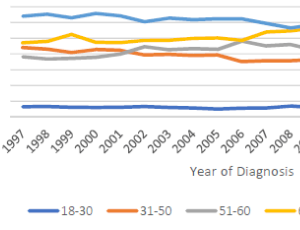
New N-ribosides and N-mannosides of Rhodamine Derivatives for Suppressing Leukemia Cell Line Growth
A. I. Khodair , M. K. Awad , J. P. Gesson , Y. A. M. M. Elshaier
Leukemia is a tumor of the primary blood-forming cells. leukemia is not only a cancer of the white blood cells but also it originates in other blood cell types. Types of leukemia are categorized based on the rate of growth to acute (fastgrowing) or chronic (slower growing), and whether it arises in myeloid cells or lymphoid cells. Different types of leukemia have a different line of treatment and prognosis.
J Clin Haematol, 2020, Volume 1, Issue 1, p7-9 | DOI: 10.33696/haematology.1.002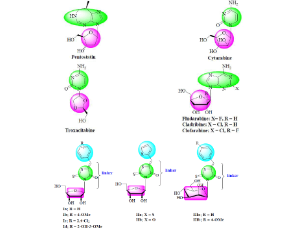
Chemotherapy Promotes Release of Exosomes Which Upregulate Cholesterol Synthesis and Chemoresistance in AML Blasts
Chang-Sook Hong , Michael Boyiadzis , Theresa L. Whiteside
Extracellular vesicles (EVs) are emerging as a key mediator of intercellular communication as well as a major mechanism of functional reprogramming of cells in disease. All cells produce EVs, which freely circulate and are found in all body fluids. EVs are heterogenous, consisting of subsets of vesicles with different sizes, distinct origins, and various functions (Figure 1). They mediate a broad variety of biological events ranging from cellular activation, inflammation, blood coagulation, angiogenesis, cellular transport, and others.
J Clin Haematol, 2021, Volume 2, Issue 2, p36-39 | DOI: 10.33696/haematology.2.026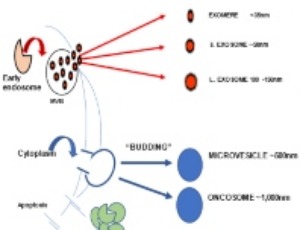
Flavopiridol (Alvocidib), a Cyclin-dependent Kinases (CDKs) Inhibitor, Found Synergy Effects with Niclosamide in Cutaneous T-cell Lymphoma
Xu Hannah Zhang , Jack Hsiang , Steven T. Rosen
Flavopiridol (FVP; alvocidib), an FDA-approved orphan drug, has been studied in clinical trials under both single treatment and combination scenarios; several singleagent Phase I and Phase II clinical trials against leukemia, lymphomas, and solid tumors are active. To date, there have been more than 50 clinical trials involving FVP in the United States. Unfortunately, almost half of patients on FVP clinical trials showed serious adverse effects, implicating appropriate dosages need to be found and an alternative way to circumvent the toxicity of FVP with synergistic agents.
J Clin Haematol, 2021, Volume 2, Issue 2, p48-61 | DOI: 10.33696/haematology.2.028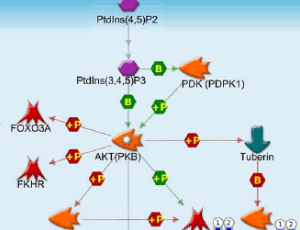
Management of Diagnostic and Treatment Centers in the Second Wave of COVID-19
Mahdieh Motie , Reza Dehnavieh , Khalil Kalavani
COVID-19 has challenged global health and affected many countries. The disease had infected more than 16 million people and killed over 650,000 ones by the end of July 2020. According to Sahu et al., COVID-19 epidemic is the third most common coronavirus in the 21st century, resulting in numerous deaths all over the world. It has caused severe psychological stress and increased hospital visits along with increased tiredness and burnout of medical staff. The disease has also raised many problems for the management of hospitals and diagnostic-treatment centers, so that many of them have no capacity to receive patients.
J Clin Haematol, 2020, Volume 1, Issue 2, p54-55 | DOI: 10.33696/haematology.1.007
Anticancer Activity of S-Glycosylated Quinazoline Derivatives
Ahmed I. Khodair , Mona A. Alsafi
Breast cancer is the most frequent malignancy in females. Due to its major impact on the population, this disease represents a critical public health problem that requires further research at the molecular level to define its prognosis and specific treatment. Basic research is required to accomplish this task and this involves cell lines as they can be widely used in many aspects of laboratory research and, particularly, as in vitro models in cancer research. MCF-7 is a commonly used breast cancer cell line, that has been promoted for more than 40 years by multiple research groups but its characteristics have never been gathered in a consistent review article.
J Clin Haematol, 2020, Volume 1, Issue 3, p72-77 | DOI: 10.33696/haematology.1.011
Second Generation Platelet Concentrates - L-PRF (Fibrin Rich in Platelets and Leukocytes) and Its Derivatives (A-PRF, I-PRF)-: Morphological Characteristics to be Used in Modern Regenerative Surgery. Experimental Research
Alessandro Crisci , Carlo Alberto Minniti , Antonella Conte , Michela Crisci , Federica Cardillo
Platelet preparations (PDPs) have gained success, mainly due to their high concentrations of biologically active molecules, such as growth factors and cytokines, which play an important role in tissue repair and reconstruction. Recent knowledge shows that platelets can play a new role in tissue reproduction and vascular restoration, as well as being the protagonists of inflammatory processes and immune system responses. They release bio-active proteins and other active ingredients that can affect a number of phenomena that promote cell consumption, growth and transformation (growth factors).
J Clin Haematol, 2020, Volume 1, Issue 3, p90-102 | DOI: 10.33696/haematology.1.014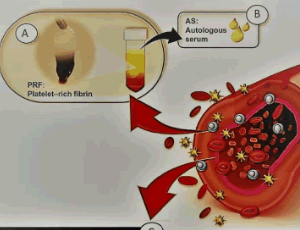
About Scientific Archives
Scientific Archives is a global publisher initiated with the mission of ensuring equal opportunity for accessing science to research community all over the world. Spreading research findings with great relevance to all channels without any barrier is our goal. We want to overcome the challenges of Open Access with ensured quality and transparency.
